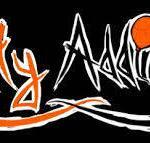The Evolution of EBM Music: A Profound Exploration into the Origins, Sounds, and Impact of Electronic Body Music
Electronic Body Music, commonly known as EBM, has carved its own distinct space in the vast landscape of electronic music. With its pounding beats, industrial undertones, and provocative lyrics, EBM has captivated audiences around the world for decades. In this comprehensive article titled “The Evolution of EBM Music: A Profound Exploration into the Origins, Sounds, and Impact of Electronic Body Music,” we delve deep into the roots of this genre to unveil its origins, uncover its unique soundscape, and examine how it continues to shape contemporary music culture across various genres. Join us on a journey through time as we unravel the layers within this enigmatic musical movement that keeps pushing boundaries and igniting passionate discussions among both die-hard fans and curious newcomers alike.
The Birth of EBM: Exploring the Origins of Electronic Body Music
EBM, also known as Electronic Body Music, emerged in the late 1970s and early 1980s in Belgium and Germany.
- Combining elements of punk rock, new wave, industrial music, and electronic synth sounds created a unique sonic experience.
- Bands like DAF (Deutsch Amerikanische Freundschaft), Liaisons Dangereuses, and Front 242 were pioneers of this genre.
- With pulsating rhythms, aggressive vocals, and minimalist lyrics that often tackled societal issues or explored dark emotions,
- EBM became an outlet for rebellion against mainstream music trends.
The birth of EBM coincided with advancements in technology,
- The availability of affordable drum machines and synthesizers enabled musicians to experiment with new sounds.
- This DIY approach allowed artists to create their own distinctive style within the umbrella term "EBM".
As its popularity grew throughout the ’80s
The Influences and Inspirations: Tracing the Roots of EBM
Influences and Inspirations
Electronic Body Music (EBM) is a genre that emerged in the 1980s, incorporating elements from genres such as post-punk, industrial music, and synthpop. Many artists and bands drew inspiration from various sources to create the unique sound of EBM.
- Kraftwerk: The German band Kraftwerk played a major role in shaping the electronic music landscape. Their use of synthesizers and futuristic themes heavily influenced the development of EBM.
- Throbbing Gristle: Known for their experimental and confrontational approach to music, Throbbing Gristle’s dark and industrial sound left a lasting impression on early EBM artists.
- D. A. F.: Deutsch Amerikanische Freundschaft (D. A. F.) blended punk attitude with electronic sounds, pioneering what would become key characteristics of EBM.
These influential artists laid the foundation for EBM by pushing boundaries and experimenting with new sounds. Their innovations continue to shape the genre today.
The Sound of EBM: An In-Depth Analysis of its Unique Sonic Characteristics
EBM music is characterized by its distinctive, pulsating beats and aggressive, industrial sound. It often features a combination of electronic synthesizers, drum machines, and distorted vocals. These sonic elements are carefully crafted to create a hypnotic and intense atmosphere that resonates with the listener on a visceral level.
Sonic Characteristics:
- Heavy Basslines: One of the defining features of EBM music is its heavy basslines, which provide a solid foundation for the driving rhythm. These basslines are often created using synthesizers or sampled from analog sources to give them a raw and gritty sound.
- Percussive Beats: EBM utilizes repetitive percussive beats that intensify throughout the track. These beats are typically generated by drum machines or sequencers, giving them a mechanical precision that adds to the genre’s industrial aesthetic.
- Distorted Vocals: Another key characteristic of EBM is the use of distorted vocals. By processing vocal recordings through effects such as distortion or reverb, artists achieve an aggressive and abrasive texture that complements the harshness of the instrumentation.
Overall, it is this unique combination of elements – heavy basslines, percussive beats, and distorted vocals – that sets EBM apart from other genres within electronic music. This distinct sonic palette contributes to its enduring appeal among fans who appreciate its dark intensity and rebellious spirit.
EBM and Industrial Music: A Symbiotic Relationship
EBM (Electronic Body Music) and industrial music share a symbiotic relationship, one that has had a significant impact on the evolution of both genres.
- Origins: EBM emerged in the late 1970s as an offshoot of industrial music. Both genres were heavily influenced by bands like Throbbing Gristle, Cabaret Voltaire, and D. A. F., who incorporated electronic sounds into their experimental music.
- Sounds: The distinctive sound of EBM can be attributed to its use of repetitive beats, pulsating synths, aggressive vocals, and dark atmospheres. These elements are also found in industrial music but are often taken to even greater extremes.
- Impact: The collaboration between EBM and industrial music pushed boundaries within the electronic music scene. It paved the way for new subgenres such as techno-industrial and electro-industrial while inspiring countless artists to experiment with unconventional sounds.
The bond between EBM and industrial music is undeniable – they feed off each other’s energy, resulting in a powerful blend of aggression and experimentation that continues to captivate listeners today.
EBM Goes Global: The Spread and Impact of the Genre Worldwide
The Global Spread of EBM
EBM, originating in Germany during the early 1980s, quickly gained popularity and spread to other parts of Europe and beyond. The genre’s driving beats and aggressive rhythms resonated with audiences around the world, leading to its rapid global expansion. Fans in Belgium, France, Italy, and the Netherlands embraced EBM with fervor, fueling a thriving underground scene that still exists today.
Impact on Electronic Music Worldwide
The impact of EBM on electronic music worldwide cannot be overstated. Its fusion of industrial sounds with danceable beats paved the way for future genres like techno and trance. In particular, many artists from Berlin’s techno scene credit EBM as a major influence on their work. This genre continues to inspire new generations of musicians across continents from North America to Asia.
A Diverse Community
One notable aspect of EBM’s global presence is its diverse community. Despite originating in Europe, fans from all walks of life have embraced this genre worldwide. From warehouses in Detroit to clubs in Tokyo, people gather together under the banner of EBM to immerse themselves in its energetic soundscape. This united spirit fosters an inclusive environment where everyone feels welcome.
EBM Subgenres: Exploring the Diverse Offshoots and Hybridizations
EBM, as a genre, has given rise to various subgenres that have taken its core sound and expanded it in exciting new directions. These offshoots often blend elements of other electronic genres, resulting in unique hybrid styles. Here are three notable examples:
- Aggrotech: This intense subgenre combines EBM’s driving rhythms with aggressive vocals and harsh industrial sounds. It embraces dark themes and incorporates distorted synths, heavy beats, and menacing samples to create a gritty atmosphere. Prominent artists like Combichrist and Grendel bring ferocity to Aggrotech through their energetic performances.
- Futurepop: A more melodic variation of EBM, Futurepop retains the genre’s danceable beats but adds uplifting melodies, catchy hooks, and emotive lyrics into the mix. Bands like VNV Nation successfully fuse elements of synth-pop with EBM to produce anthemic tracks that inspire both movement on the dancefloor and introspection.
- Terror EBM: As its name suggests, Terror EBM pushes boundaries by embracing extreme distortion effects on vocals and synths while maintaining an uptempo pace characterized by relentless beats. Artists such as Suicide Commando exemplify this unapologetically abrasive style that resonates with fans seeking sonic intensity.
These diverse subgenres showcase how EBM continues to evolve without losing sight of its underground roots—each one offering a distinct interpretation that keeps pushing boundaries within electronic music.
The Top 10 Bands In the EBM Genre and Subgenres
The Top 10 Bands in the EBM Genre and Subgenres
- Front 242: One of the pioneers of EBM, Front 242 emerged in Belgium during the early 1980s. Known for their energetic beats and aggressive vocals, they set the standard for future EBM bands.
- Nitzer Ebb: Hailing from England, Nitzer Ebb combined industrial sounds with catchy hooks and powerful lyrics. Their influential album "That Total Age" solidified their place in the EBM scene.
- VNV Nation: Blending elements of electronic music with darkwave and synth-pop, VNV Nation creates emotional yet danceable tracks that captivate audiences worldwide.
- Covenant: With a unique blend of futuristic soundscapes and thought-provoking lyrics, Covenant has become one of the most successful bands within the EBM genre.
- And One: This German duo infuses their music with infectious energy and melodic hooks that have made them a favorite among fans across Europe.
- Deutsch Amerikanische Freundschaft (DAF): DAF’s minimalist approach to electronic music influenced numerous artists within the genre, making them true innovators during the early years of EBM.
- Combichrist: Combining elements of aggrotech and industrial metal with traditional EBM sounds, Combichrist pushes boundaries and delivers high-energy performances that leave audiences craving more.
- Skinny Puppy: Considered one of Canada’s greatest exports within the industrial scene, Skinny Puppy’s experimental soundscapes continue to inspire generations of musicians today.
- Front Line Assembly: A powerhouse band that seamlessly blends diverse genres like electro-industrial, post-punk, and trance into their unique brand of EBM-inspired music.
- Assemblage 23: Known for his introspective lyrics and captivating melodies, Assemblage 23 brings an emotional depth to his brand of synth-pop-infused EBM.
*Note: This list is not exhaustive and represents a small selection of notable bands within the diverse EBM genre and subgenres.
EBM in Contemporary Music: How the Genre Continues to Shape Modern Sounds
EBM’s Influence on Contemporary Music
EBM, as a genre, continues to have a significant impact on contemporary music. It has influenced various genres such as industrial, techno, and even mainstream pop. The distinct characteristics of EBM, including its aggressive beats and raw energy, have found their way into the soundscapes of many modern artists.
Crossing Genre Boundaries
One example of this cross-pollination is evident in the work of bands like Nine Inch Nails and Ministry. These artists blend elements of EBM with rock and metal to create a unique fusion that appeals to a wide audience. The pulsating rhythms and intense vocals provide an edgy quality that resonates with listeners seeking an alternative sound.
Another way EBM has shaped contemporary music is through its influence on electronic dance genres like techno and house. DJs incorporate EBM-inspired sounds into their sets to inject more energy onto the dancefloor. This blend creates an electrifying atmosphere where fans can let loose and immerse themselves in the driving force behind EMB’s enduring appeal.
Conclusion: An Ever-Evolving Sound
In conclusion, the evolution of EBM music extends far beyond its original roots in 1980s Europe. Today, it continues to shape modern sounds by influencing various genres across different musical landscapes. Whether it’s infusing aggression into rock or adding intensity to electronic dance beats, EBM’s impact remains profound in shaping contemporary music at large.
The Future of EBM: Predictions and Innovations in the Electronic Body Music Scene
EBM is a genre that continues to evolve and push boundaries. Here are some predictions for its future:
- Fusion with other genres: EBM has already shown an inclination towards blending with other styles, such as techno and industrial. In the future, we may see even more experimentation with new soundscapes, as artists merge EBM elements with genres like hip-hop or ambient music.
- Technological advancements: With the rapid advancement of technology, it’s inevitable that EBM will take advantage of new digital tools and software. This could lead to innovative production techniques and sound design possibilities, creating a fresh sonic experience for listeners.
- Integration of AI tools: Artificial intelligence has made significant strides in music creation, and it’s likely that EBM musicians will utilize AI algorithms to generate unique beats and melodies. However, human creativity will remain crucial in shaping these AI-generated sounds into meaningful compositions.
Overall, the future looks bright for Electronic Body Music as it continues to push boundaries through fusion with other genres, harnessing technological advancements, and incorporating AI tools while staying true to its core essence – pulsating rhythms and raw energy that truly moves both body and soul.








